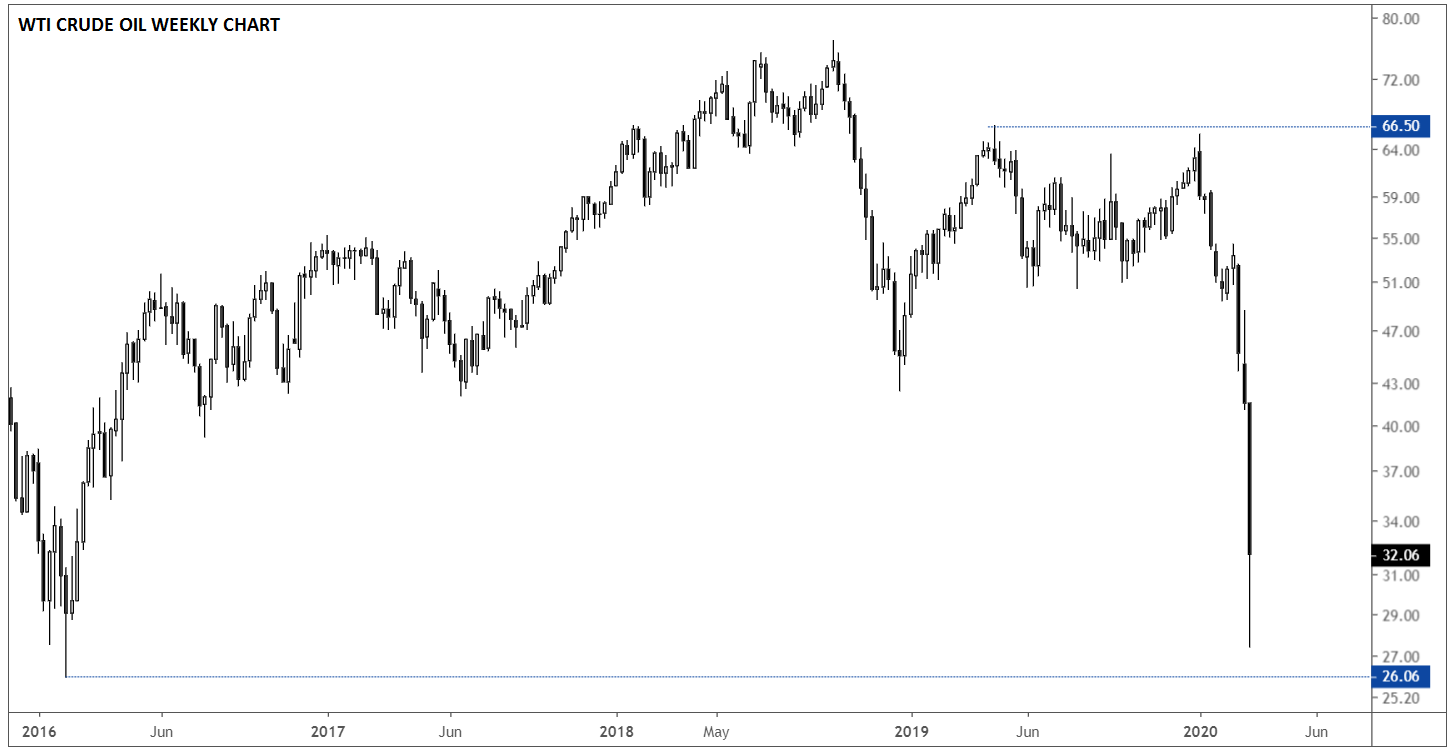It has been a while since Saudi Arabia flexed its muscles to show exactly what it can do in the oil market but this weekend the gloves came off.
Instead of playing nice as everybody expected it to after the failed OPEC+ discussions last week, and instead of cutting output to stem the decline in oil prices, the country decided to go hell for leather and pump 10m bbl from April. Where it originally had a tacit agreement with Russia to not battle one another in the Asian markets, it has now turned around and cut its export prices to Asia by $6 starting next month.
Saudi Arabia and other OPEC countries have been trying to persuade Russia for weeks to coordinate a joint reduction of output as coronavirus eroded Asian demand, but Russia steadfastly refused, eager not to lose out on potential oil income.
Although Saudi’s arrow was technically directed at Russia, Russia is not the one that will end up bleeding the most. Sure, the country requires oil prices to be in the region of $60 to balance its budget over a longer period of time, but Russia’s finance ministry has said that the country can live with oil prices at $25/bbl for months before it becomes a problem.
Besides, Putin has taken the US sanctions against some of the Russian oil producers as a personal slap to the face and will do what he feels is needed to back his country’s producers through a times of crisis.
Saudi Arabia can assert itself in this way because it can produce oil at below $16 a barrel and has enough stocks to feed into the market to cause prices to tip lower at any point. It has not used this muscle for years because it has built up a collaborative relationship with Russia in which the two did not compete too heavily for the share of export markets, but every time they pulled back with their output, the gap was filled by US shale producers.
The ones who won’t be able to take a prolonged period of low prices – and this is what we are looking at now - are US shale producers, and actually, most of the oil majors. Investors have already cottoned on to that, selling off BP and Shell this morning to the tune of almost 20%. Chevron and Exxon will also be in the firing line later today when US markets open.
But the weakest links are US shale producers because they require oil prices of between $45 and $54 a barrel to break even. Some of them have hedged their production out a few months and will not begin to hurt immediately but in the US where the banks cannot be stalled for repayment, the crashing and burning will happen much faster than in the East or the Middle East.
The oil market is now looking at months of higher production at a time when the spread of the coronavirus in Europe is only beginning to take full form. It is far from clear how badly European industries and businesses will be affected, how long air travel will remain subdued and if oil demand from transport will return to normal by the summer, when it is traditionally at its highest demand during the year.
The only thing that seems a fair bet at this stage is months of volatility. Everything else, including bargain basement buy opportunities, is up for grabs.
Source: TradingView, GAIN Capital
Source: TradingView, GAIN Capital
This research is for informational purposes and should not be construed as personal advice. Trading any financial market involves risk. Trading on leverage involves risk of losses greater than deposits.
Recommended Content
Editors’ Picks

EUR/USD stays near 1.0400 in thin holiday trading
EUR/USD trades with mild losses near 1.0400 on Tuesday. The expectation that the US Federal Reserve will deliver fewer rate cuts in 2025 provides some support for the US Dollar. Trading volumes are likely to remain low heading into the Christmas break.

GBP/USD struggles to find direction, holds steady near 1.2550
GBP/USD consolidates in a range at around 1.2550 on Tuesday after closing in negative territory on Monday. The US Dollar preserves its strength and makes it difficult for the pair to gain traction as trading conditions thin out on Christmas Eve.

Gold holds above $2,600, bulls non-committed on hawkish Fed outlook
Gold trades in a narrow channel above $2,600 on Tuesday, albeit lacking strong follow-through buying. Geopolitical tensions and trade war fears lend support to the safe-haven XAU/USD, while the Fed’s hawkish shift acts as a tailwind for the USD and caps the precious metal.

IRS says crypto staking should be taxed in response to lawsuit
In a filing on Monday, the US International Revenue Service stated that the rewards gotten from staking cryptocurrencies should be taxed, responding to a lawsuit from couple Joshua and Jessica Jarrett.

2025 outlook: What is next for developed economies and currencies?
As the door closes in 2024, and while the year feels like it has passed in the blink of an eye, a lot has happened. If I had to summarise it all in four words, it would be: ‘a year of surprises’.

Best Forex Brokers with Low Spreads
VERIFIED Low spreads are crucial for reducing trading costs. Explore top Forex brokers offering competitive spreads and high leverage. Compare options for EUR/USD, GBP/USD, USD/JPY, and Gold.

